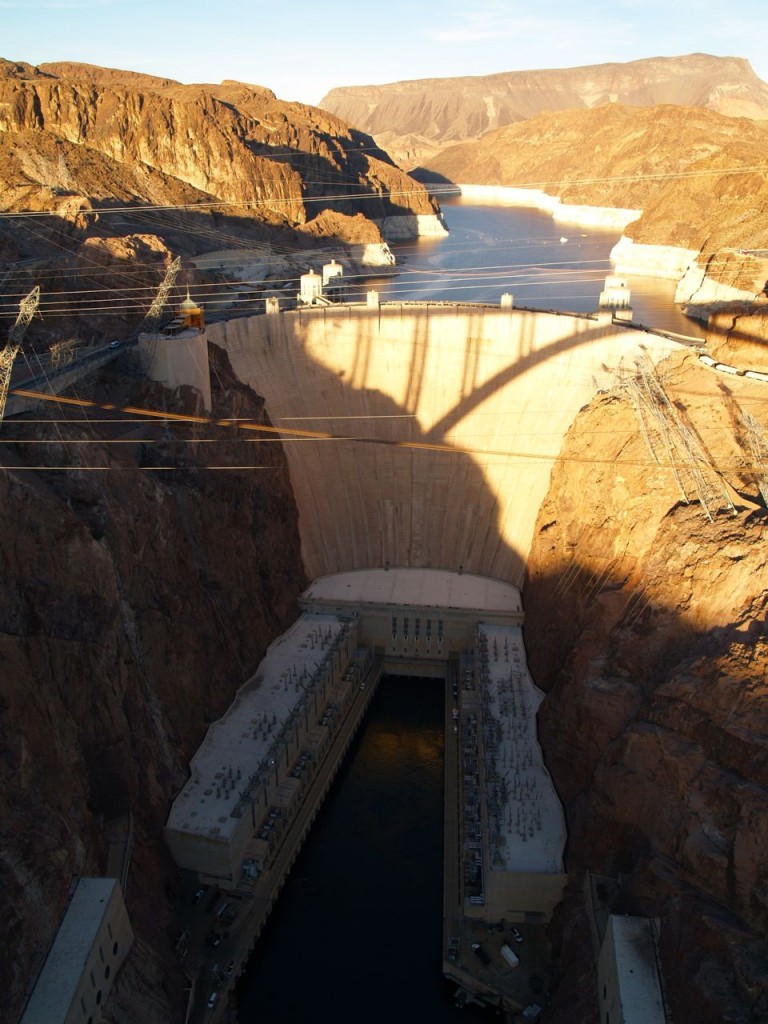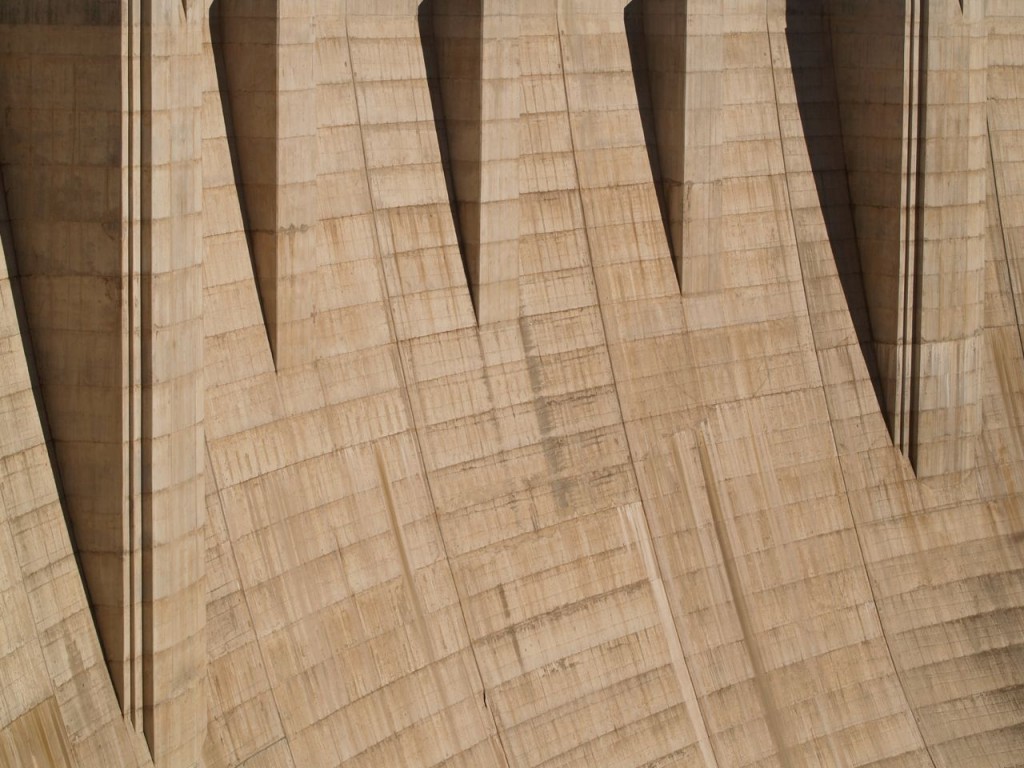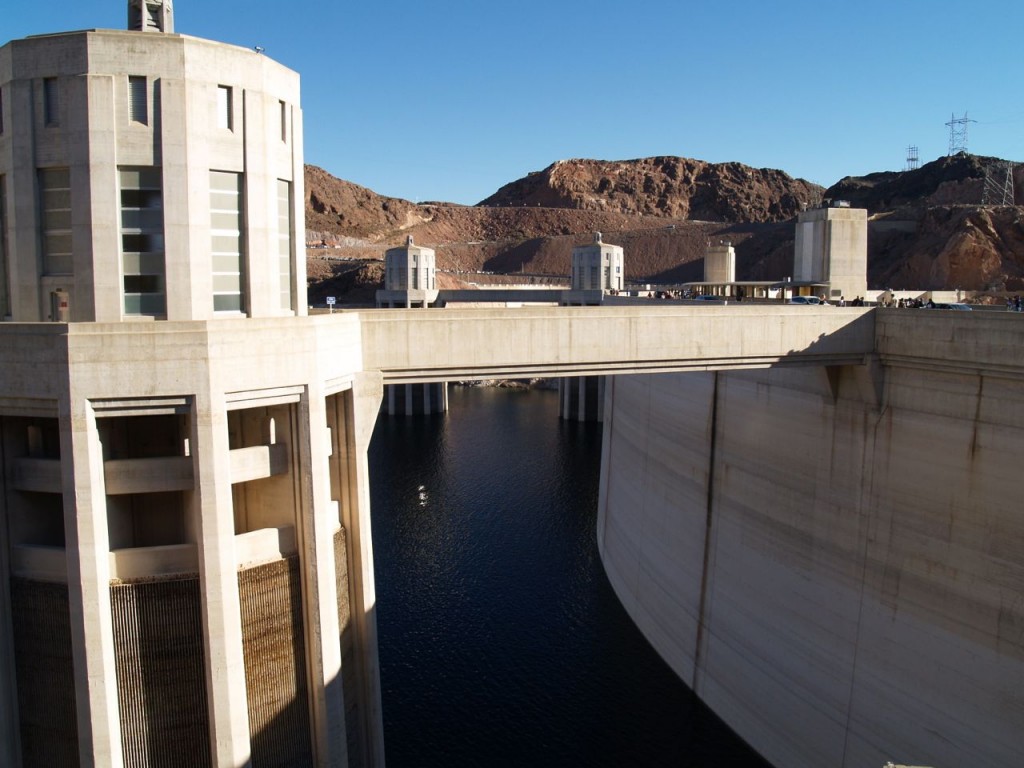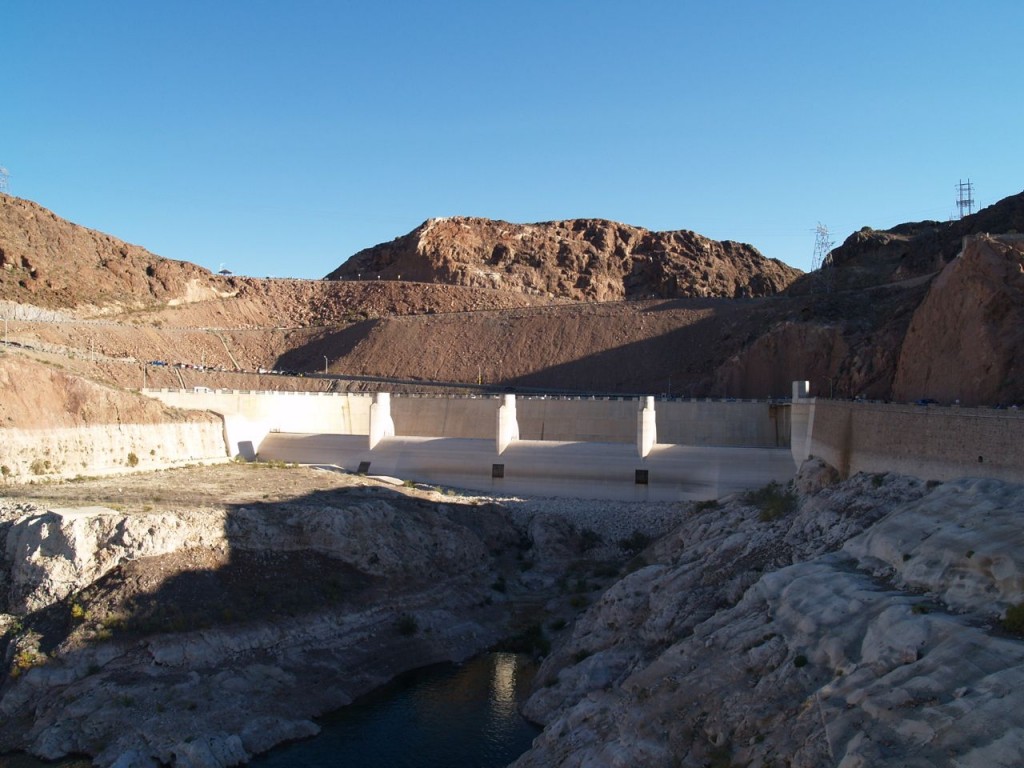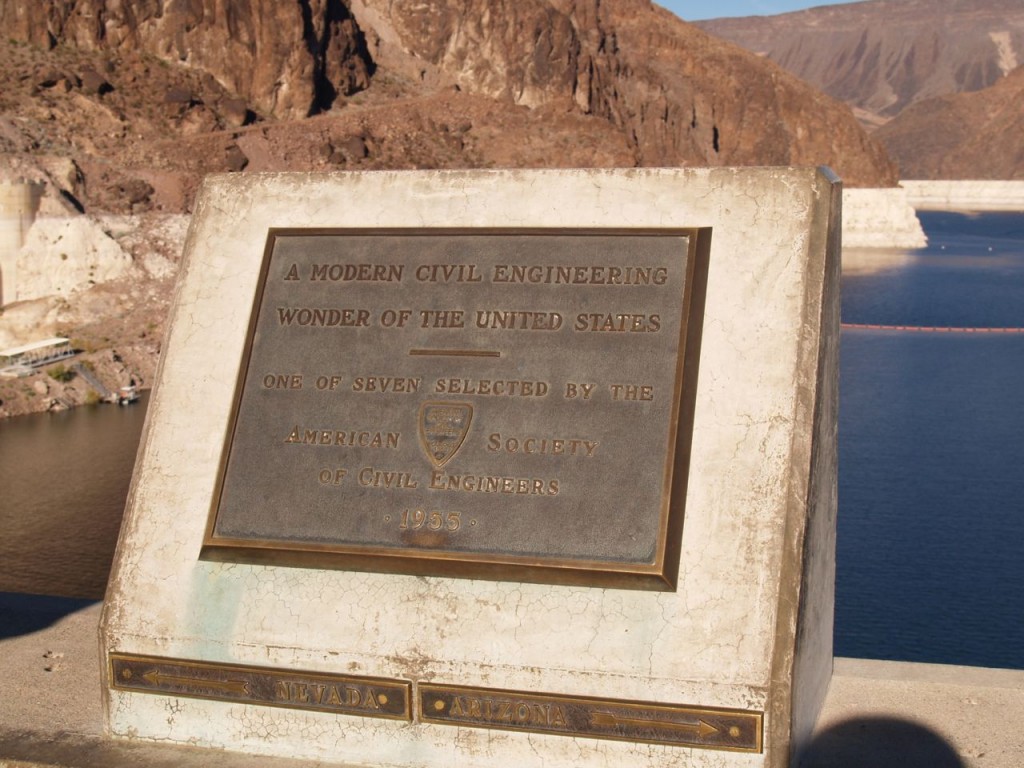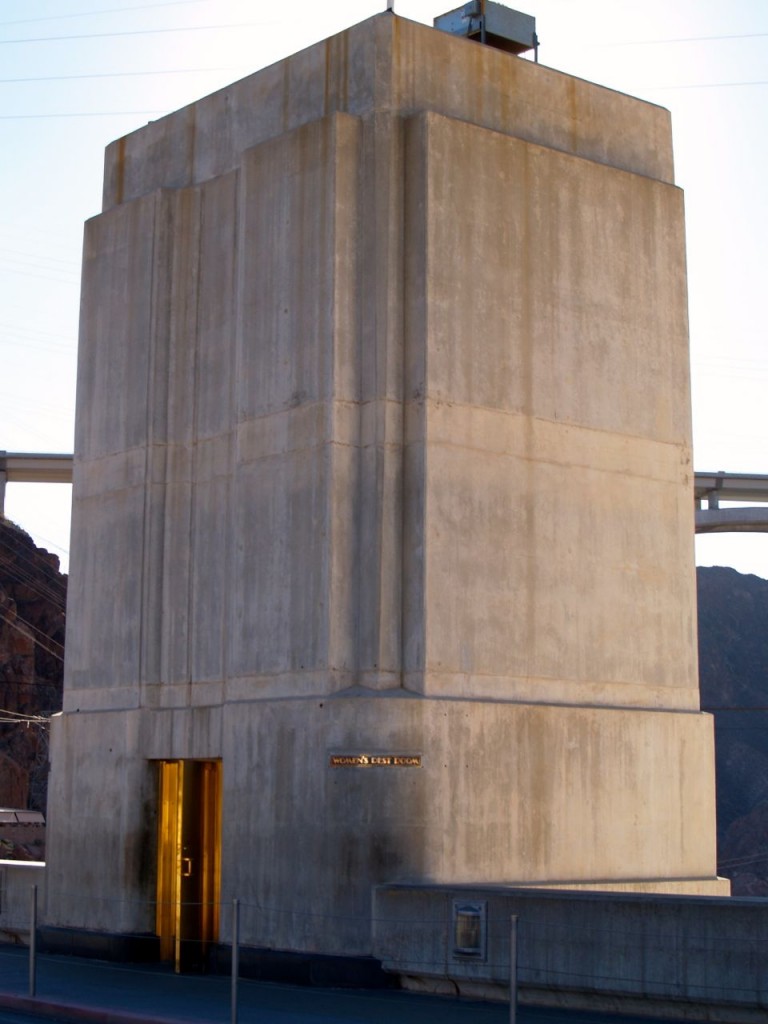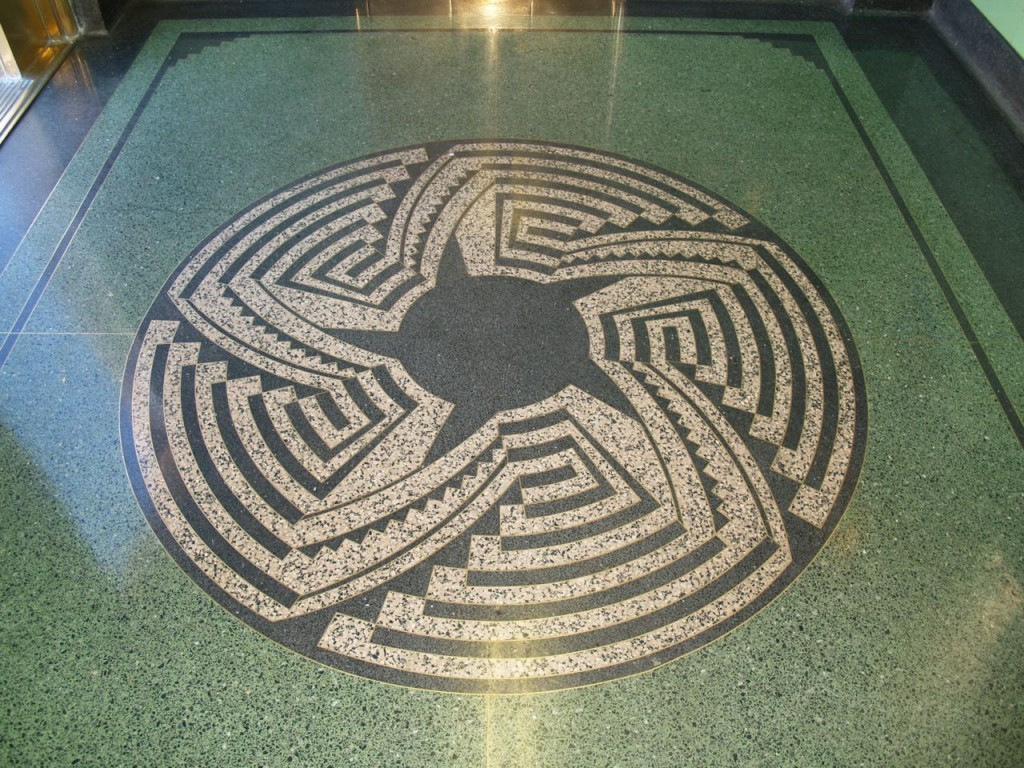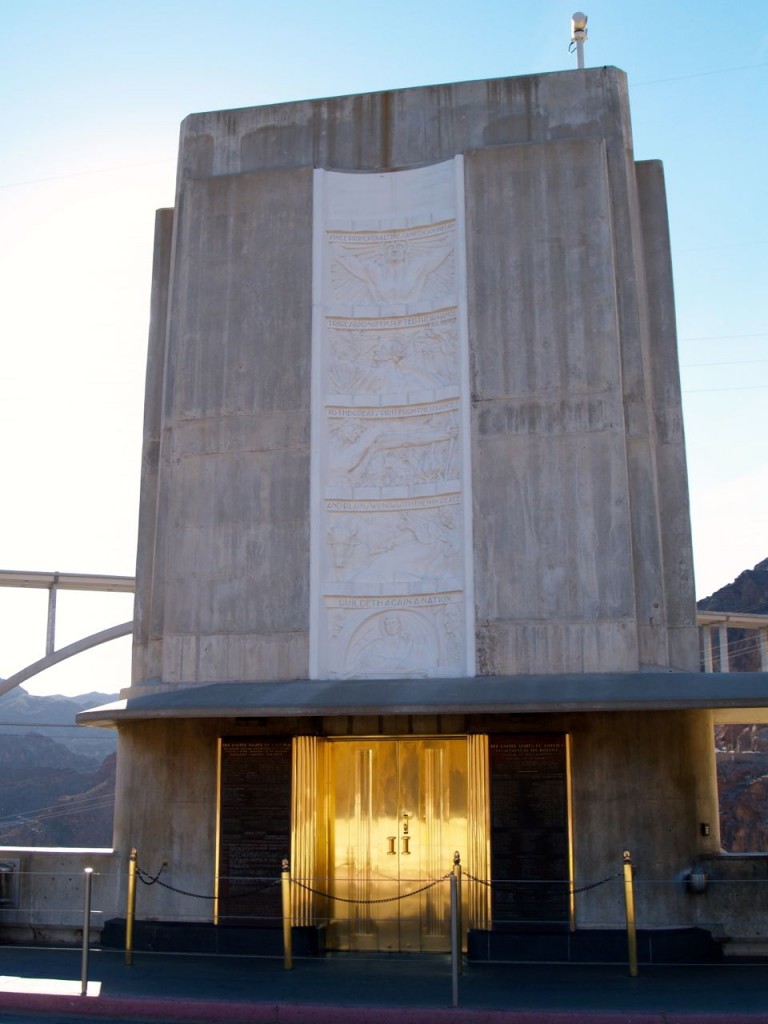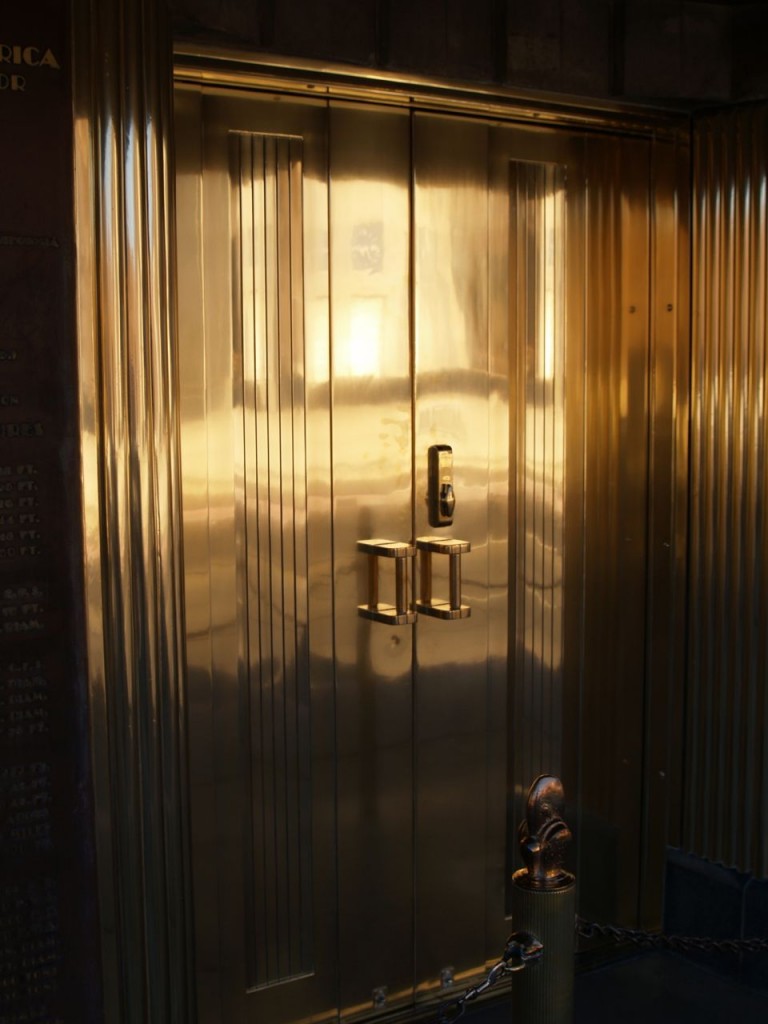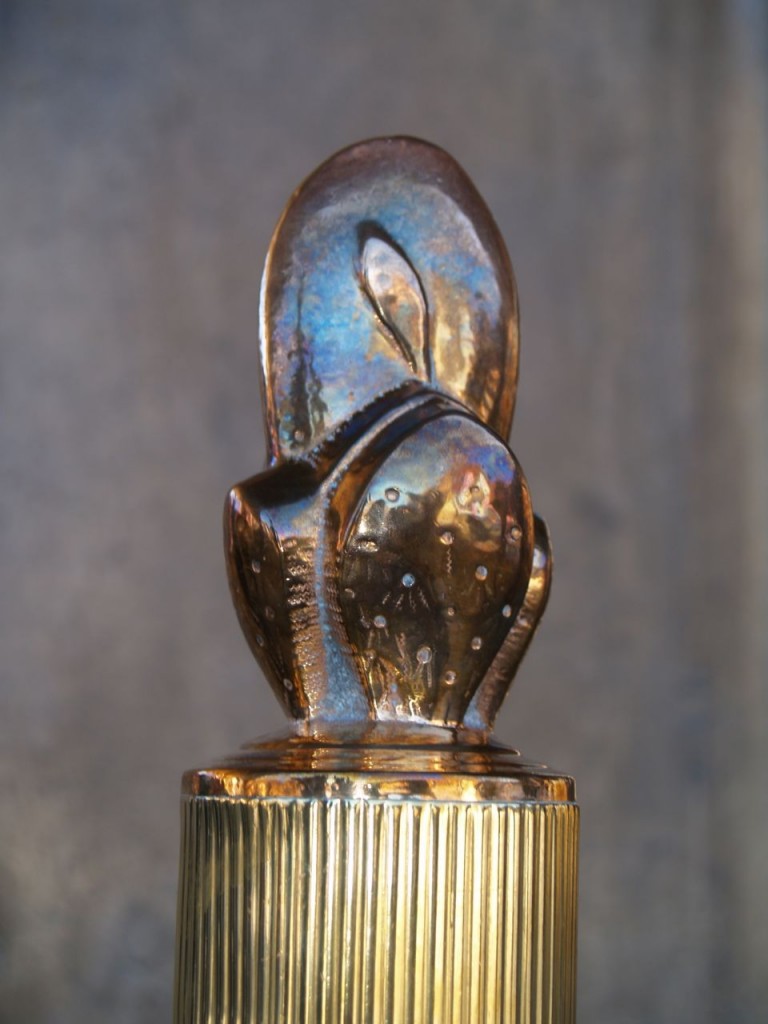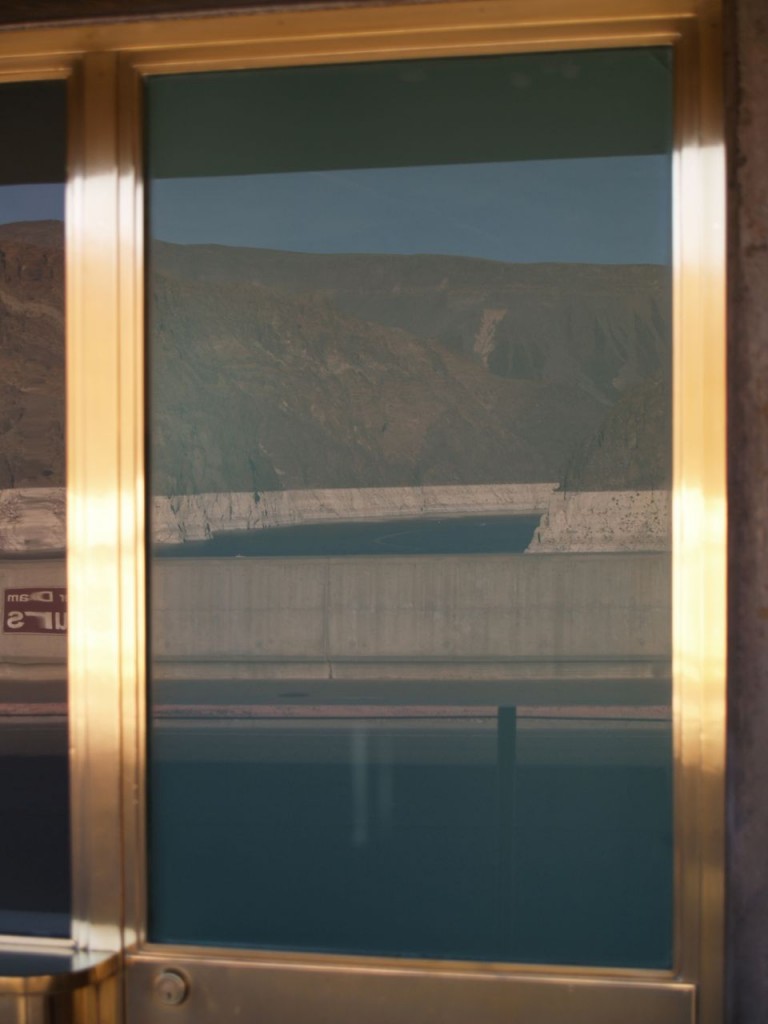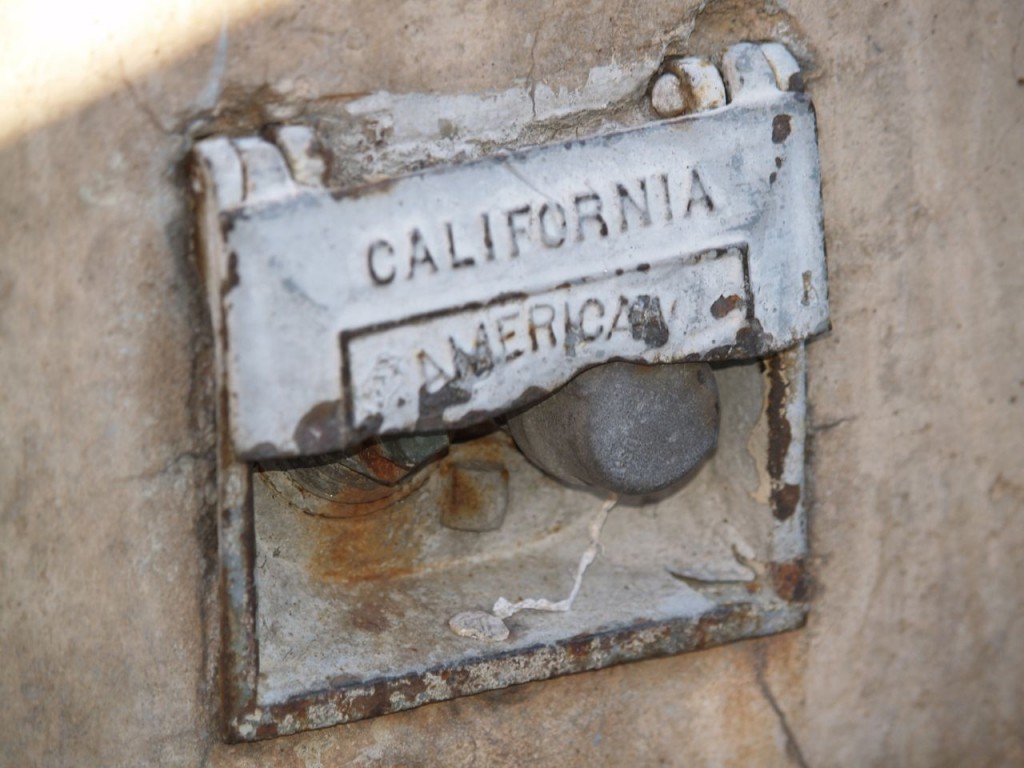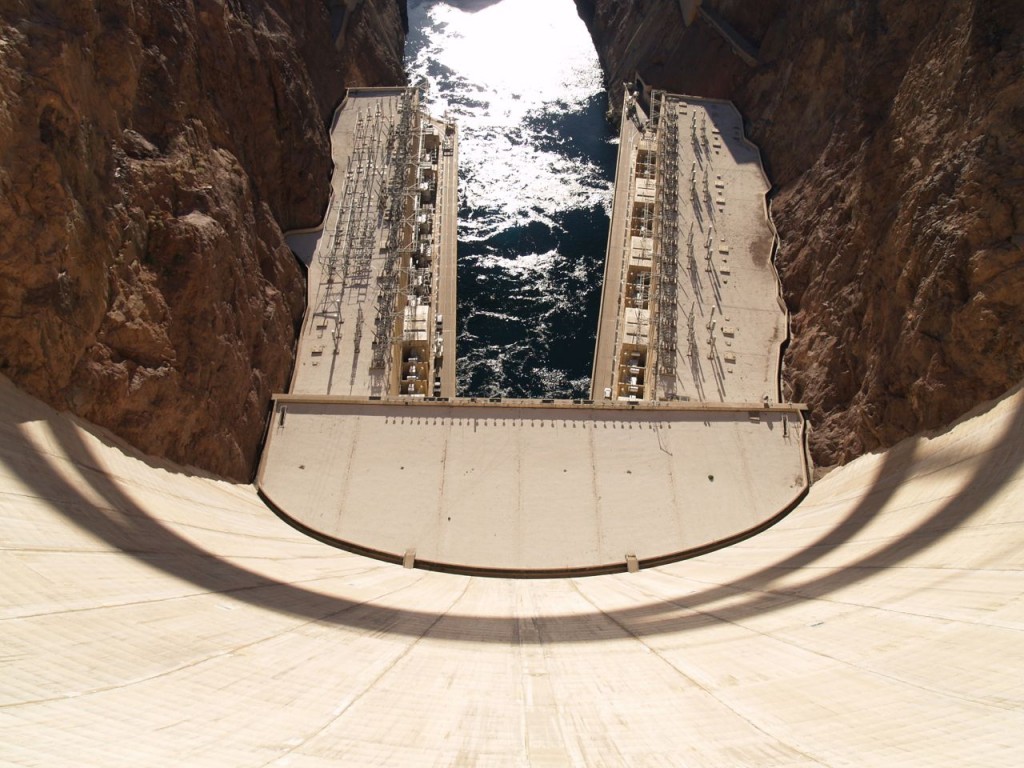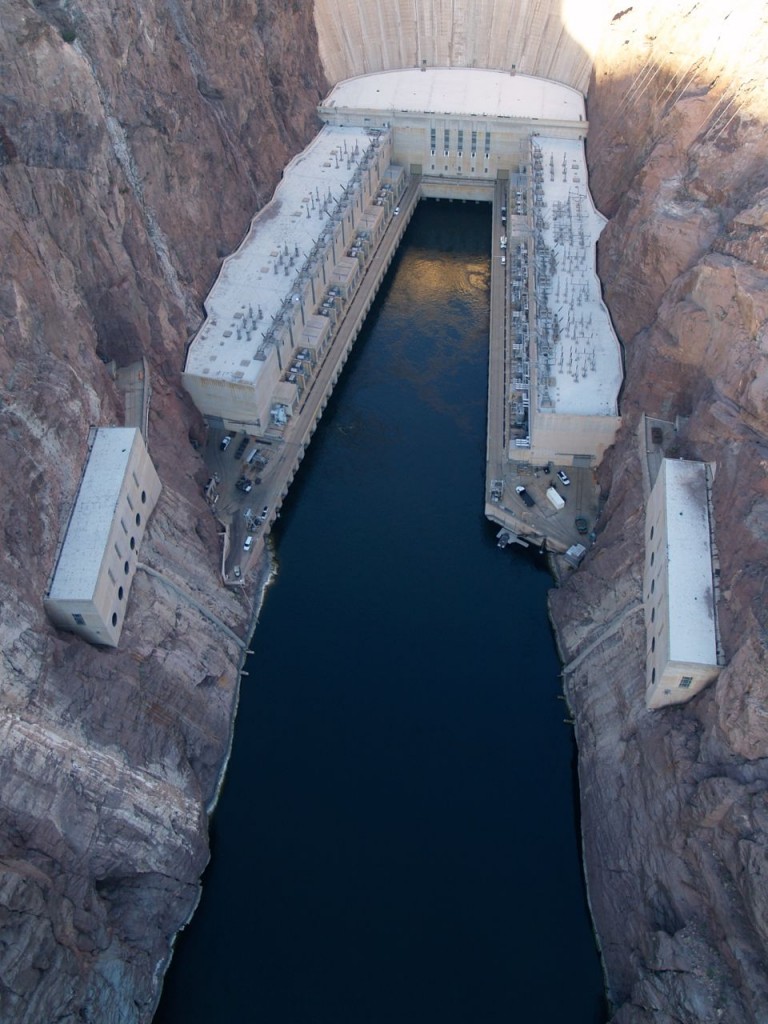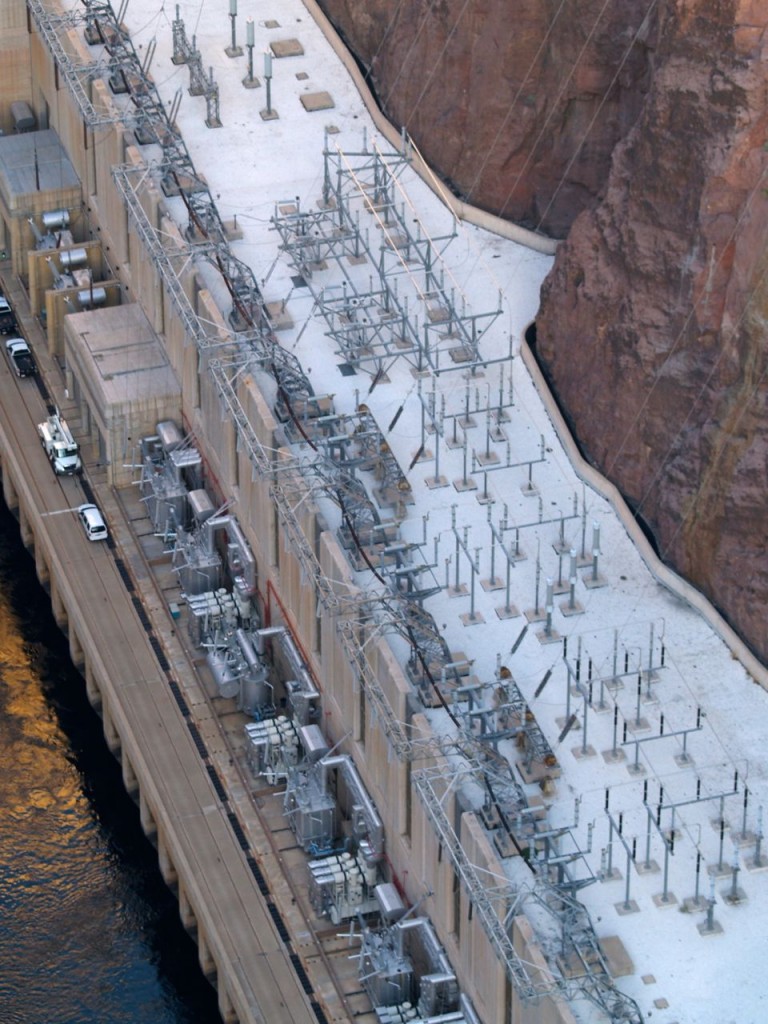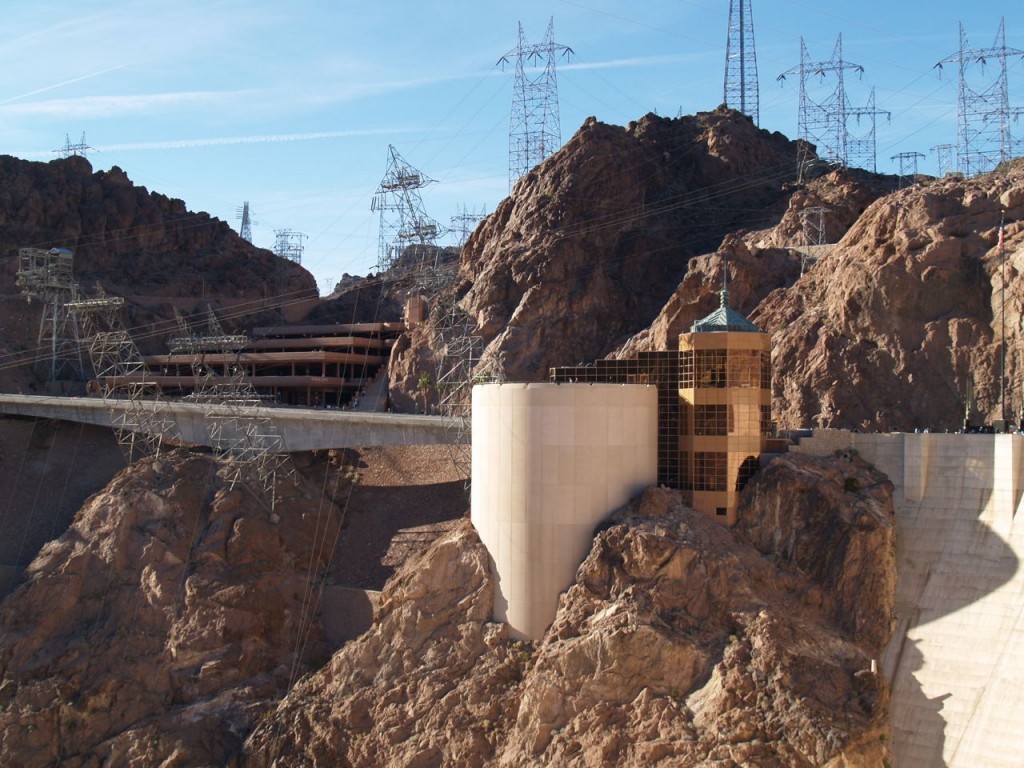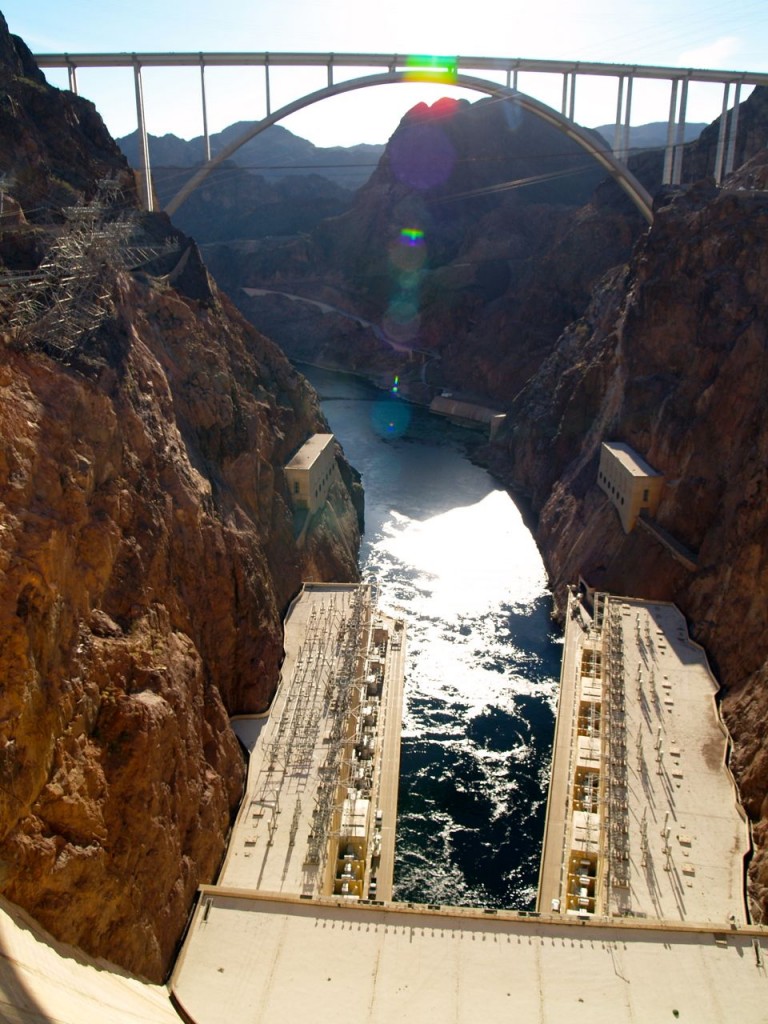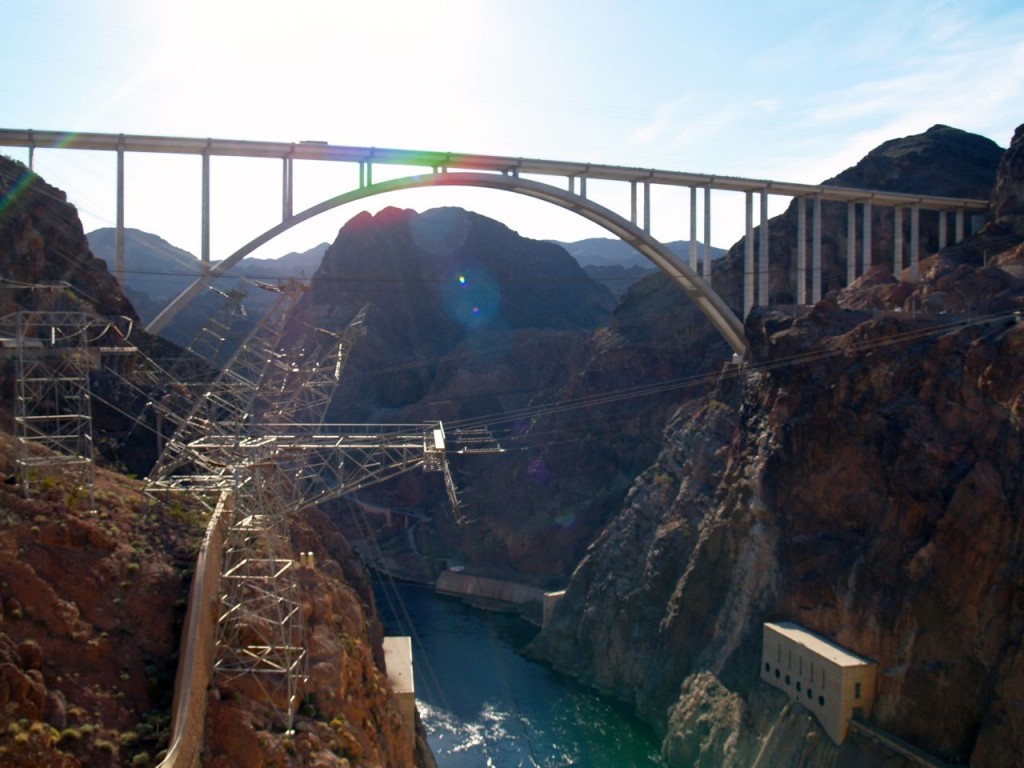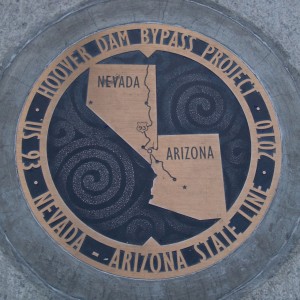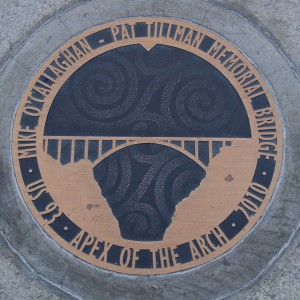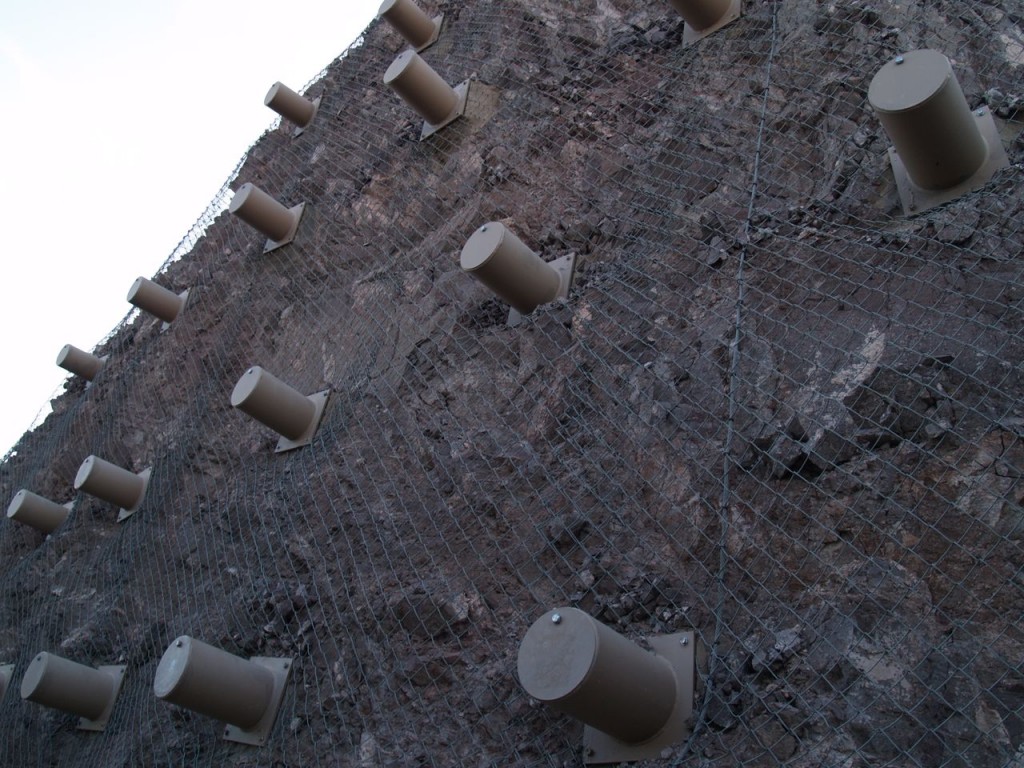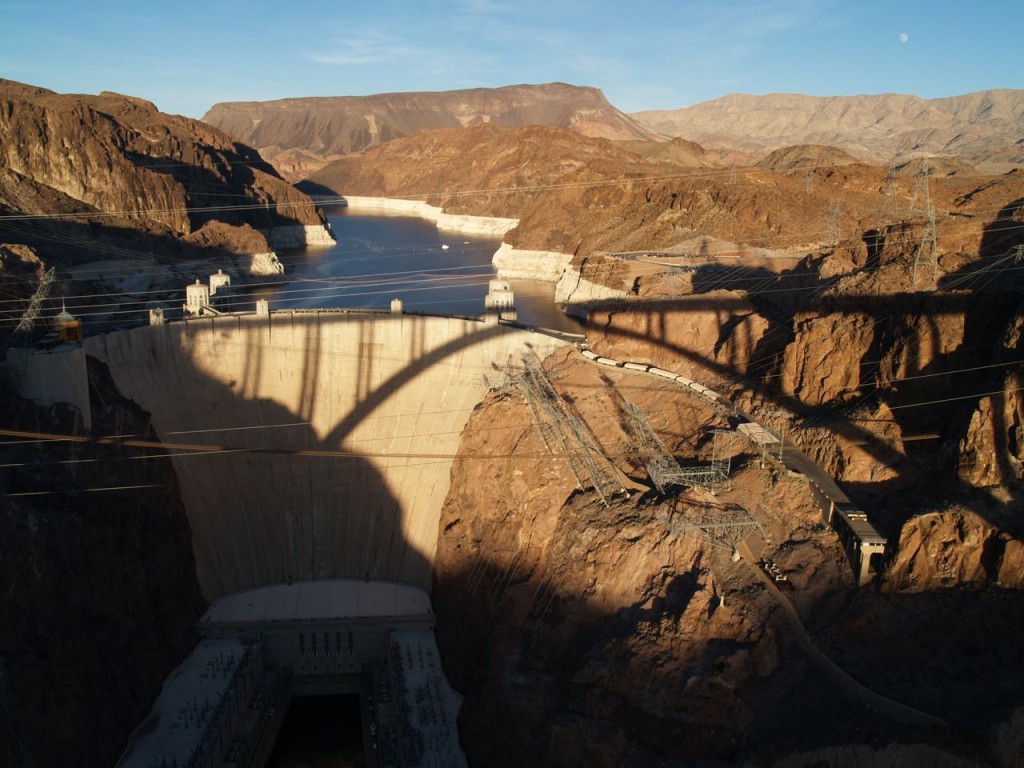On my recent trip to Las Vegas, I made a trip out to Hoover Dam. As an engineer, I have an irresistible urge to visit important engineering landmarks. However, I don’t think you have to be an engineer to realize what a marvel the Hoover Dam is. Too many hardworking men died building it (one is too many though), and it has caused ecological problems by altering the flow of the Colorado River. However from an engineering stand point, it is an absolute marvel. The new bypass bridge next to it, more formally known as the Mike O’Callaghan – Pat Tillman Memorial Bridge, is in my opinion also a marvel and beautiful in its design. Part of the reason I consider both the dam and bridge to be marvels is where they were built, across the very steep, deep canyon of the Colorado River. The Hoover Dam was built with some really nice details that I have to wonder if most visitors appreciate or even notice. It was not just built as a plain hunk of concrete, especially on top where visitors walk. The bypass bridge was also built with some nice details, including many education plaques explaining how the bridge was built and why.
On a basic level, the Hoover Dam is a large block on concrete, carefully poured to hold back the Colorado River, and its adjoining power plant.
Actually, it is not a large block of concrete. It is a massive structure of carefully and individually poured blocks of concrete that form one connected structure.
It has its four connected intake towers to bring the water to the power plant. The intake towers were nicely designed in an art deco style.
Lake Mead water level has been dropping, so currently the Arizona overflow spillway is entirely out of the water.
A plaque on the dam marks the state line between Nevada and Arizona and notes that the American Society of Civil Engineers has selected the Hoover Dam as one of seven modern civil engineering wonders.
On top of the dam are restrooms. Here is the women’s restroom which has quite the entrance.
Here is the floor of the women’s restroom. Presumably the men’s restroom has a nice one too, but I wouldn’t know.
The designers really liked brass doors. I am not sure where this brass door leads since you can longer enter the dam the way the way you could when it was originally built.
If you stand in front of the door at the right angle, at the right time of day, with the right sunlight, you can see the intake tower on the other side of the dam reflected in the door. Look near the top of the door, and you can see the reflection of the blue clock near the top of the intake tower.
An upclose photo of the post top in front of the door in the above photo. They put brass prickly pear cactuses on top of the posts. I love that level of detail.
In the reflection of this door’s window, you can see Lake Mead.
I don’t actually know what this is, but it is on top of the dam. I thought it was kind of interesting, and also it has the name of another state besides Nevada and Arizona on top of the dam.
At the bottom of the dam, of course, is its power plant. Below, as seen from dam.
The view from the bridge of the power plant.
The power plant requires a jungle of transmission lines.
The relatively new visitor’s center, new compared to the dam, was also built in a ridiculous position on the shear canyon walls.
The bypass bridge sits high above the power plant.
It gracefully crosses the canyon.
The pedestrian walkway of the bridge has nice markers to denote the state line and apex of the bridge, which are in two different spots.
The path to the bridge passes through a rock cut where each side is lined with rock stabilization bolts, which I personally think are really cool looking.
Finally, one last look at the Hoover Dam with the shadow of the bridge across it, and the moon rising in the sky.

